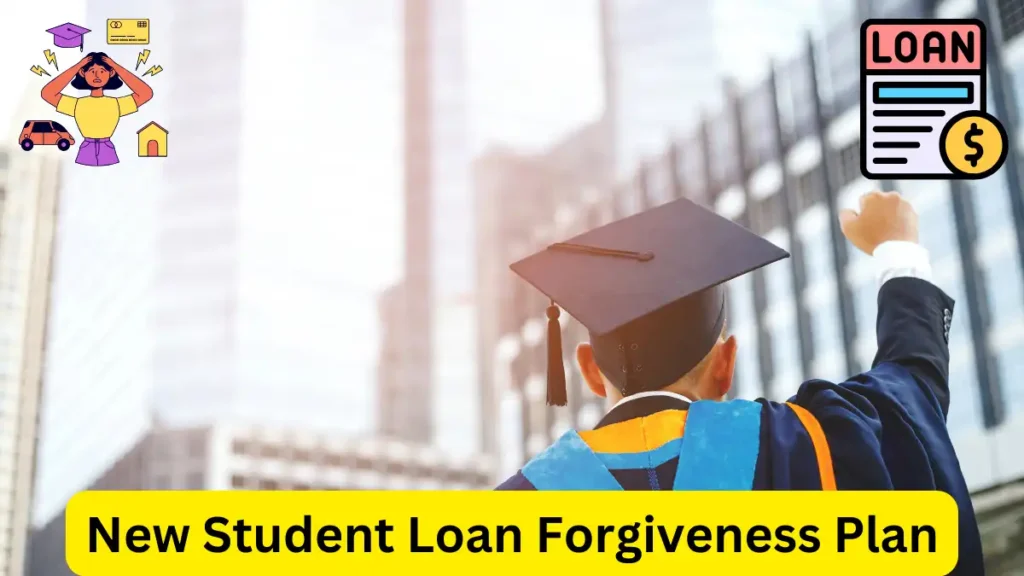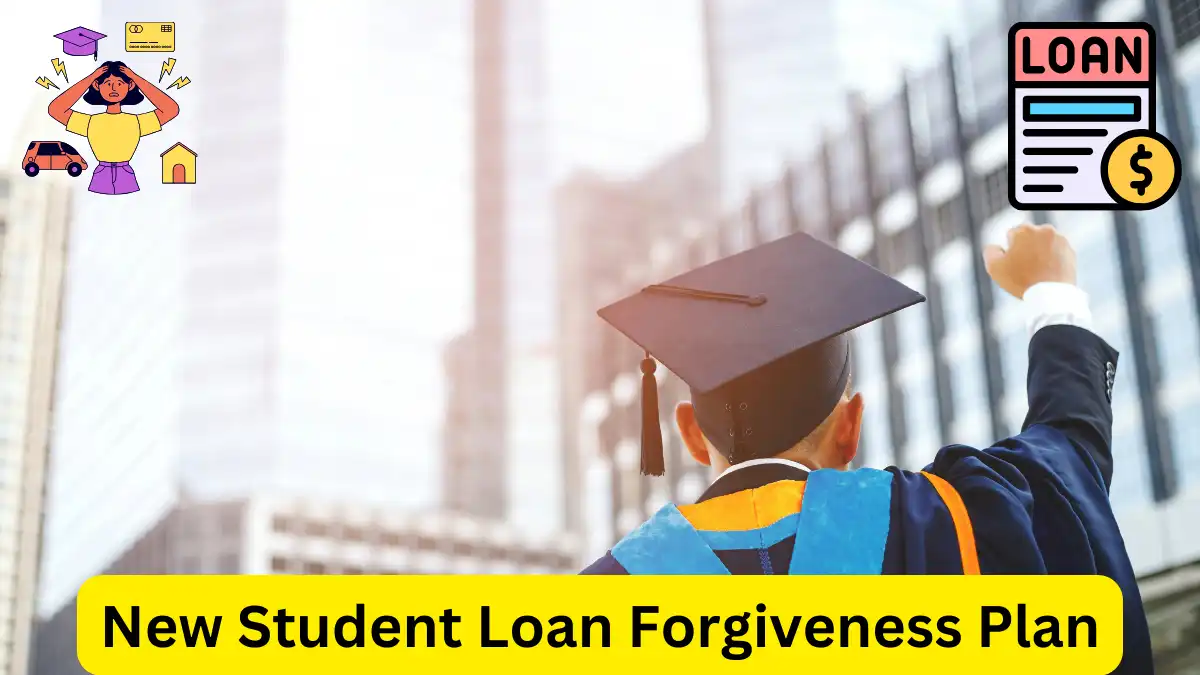Student Loan Forgiveness: The Biden administration has changed the timeline for the student debt relief plan known as SAVE. Instead of starting in July, the plan, which forgives debt for borrowers with less than $12,000 in loans who’ve made payments for 10 years, will now begin in February. This move aims to help community college students, low-income borrowers, and those struggling with loan repayment.

Typically, federal student loan borrowers have to repay their debts for 20 or 25 years for forgiveness under income-driven plans. The SAVE plan offers a faster forgiveness option for those with smaller debts. Around seven million borrowers are in the program, but it’s uncertain how many will qualify for immediate forgiveness.
Another part of the plan, starting in July, aims to cut some borrowers’ payments in half. Payments for undergraduate loans will drop from 10% to 5% of discretionary income, and for loans covering both undergraduate and graduate studies, payments will be between 5% and 10% of the borrower’s income based on the original loan amount.
New Student Loan Forgiveness Plan Overview
| Article | Student Loan Forgiveness |
| Responsible Department | Department of Education |
| Responsible Government | United States Government |
| Renewed in 2023 by | US President Joe Biden |
| Aim | To assist in waiving off a Student’s Loan. |
| Debt-Relief Amount | $10,000-20,000 |
| For More Information | Click Here |
What Is Student Loan Forgiveness?
Student Loan Forgiveness is a program or initiative that allows eligible borrowers to have some or all of their student loan debt canceled or forgiven. The forgiveness can be granted for various reasons, often based on meeting specific criteria or participating in certain programs. Here are some common forms of student loan forgiveness:
- Public Service Loan Forgiveness (PSLF): This program is designed for individuals working in qualifying public service jobs. Borrowers who make 120 qualifying monthly payments under a qualifying repayment plan while working full-time for a qualifying employer may be eligible to have the remaining balance of their federal Direct Loans forgiven.
- Teacher Loan Forgiveness: This program is for teachers working in low-income schools. Eligible teachers may qualify for forgiveness of a portion of their federal student loans after completing a specified number of years of teaching.
- Income-Driven Repayment (IDR) Forgiveness: Borrowers on certain income-driven repayment plans may be eligible for forgiveness of their remaining loan balance after making qualifying payments for 20 or 25 years, depending on the specific plan.
- Closed School Discharge: If a school closes while a student is enrolled or shortly after withdrawal, the student may be eligible for a discharge of their federal student loans.
- Total and Permanent Disability Discharge: Borrowers who are totally and permanently disabled may qualify for a discharge of their federal student loans.
- Borrower Defense to Repayment: This applies to borrowers who believe they were defrauded or misled by their school. If the borrower’s defense against repayment is successful, their federal student loans may be forgiven.
It’s important to note that eligibility criteria, application processes, and the types of loans covered can vary depending on the specific forgiveness program. Additionally, tax implications may apply to the forgiven amount, depending on the forgiveness program and the tax laws in effect.
Student Loan Forgiveness Eligibility
The new student loan forgiveness plan only applies to those in the SAVE program, considered the “most affordable repayment plan ever” by the Biden Administration. SAVE started in August 2023, replacing the now-defunct income-driven repayment plan, REPAYE.
Forgiveness is based on the original debt, not the current amount owed. Borrowers who initially took out $12,000 or less for their undergraduate or graduate education and have been making payments for 10 years will have their balance cleared. The plan also mentions that for every additional $1,000 borrowed above $12,000, forgiveness comes after another year of payments. So, if someone borrowed $13,000, they could get debt relief next year.
The program addresses disparities by focusing on those who borrowed less than $12,000, often first-generation college students or community college attendees who, for various reasons, couldn’t finish. Borrowers will start receiving forgiveness notifications in February.
The Biden Administration aims to enroll more people in the SAVE program through an outreach campaign. In the last two months, 2 million people joined SAVE. The Department of Education will email borrowers to inform them about the potential financial aid from this new debt-relief plan if they switch to a SAVE repayment plan. The success of the debt forgiveness will depend on how many people sign up for the program.
Student Loan Forgiveness Application
Not all federal student loans can be forgiven, so it’s essential to check if your loan qualifies. If you have questions about your loan or eligibility, contact your loan servicer. To start the student loan forgiveness application process, visit Studentaid.gov/debt-relief/application.
Follow these steps:
- Choose the right application and fill it out.
- Work with your servicer to confirm the information.
- Provide your full name, Social Security number, birthdate, and email when applying online.
- It takes four to six weeks for your application to show on your loan amount.
- Your loan servicer will notify you when it’s processed.
- The Department of Education and US authorities will also have a paper version of the application.
CLICK HERE FOR MORE ARTICLE
